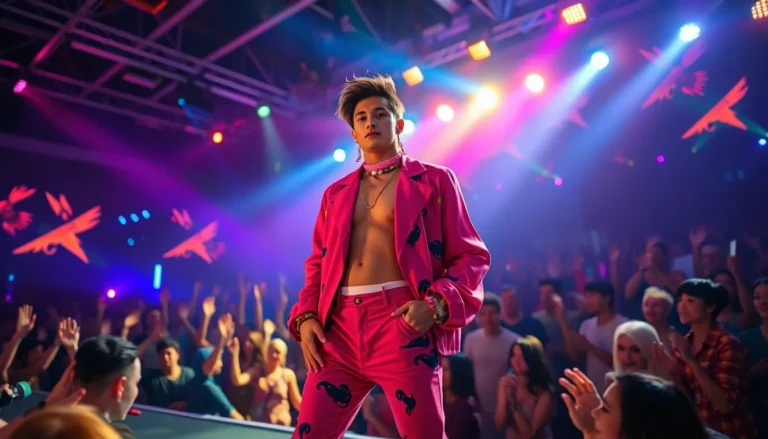Table of Contents
ToggleImagine a world where every challenge morphs into a treasure trove of opportunities. Creative thinking is like a secret superpower that can turn mundane problems into groundbreaking solutions. It’s not just about scribbling brilliant ideas on a napkin: it’s about reshaping perspectives and diving deep into innovative territory. In this text, we’ll unravel the intricacies of creative thinking and problem solving, exploring how to harness this skill for success, all while keeping it engaging and relevant. Buckle up: it’s going to be an enlightening ride.
Understanding Creative Thinking

Creative thinking is more than just a buzzword: it’s a mental state that enables individuals to approach problems differently. This type of thinking embraces originality, the unexpected, and often challenges the status quo. While many believe that creativity is an inherent talent reserved for artists or musicians, research shows that it can be cultivated and developed by anyone.
At its core, creative thinking is about making connections that others may overlook. It involves seeing patterns and relationships between seemingly unrelated concepts. For example, when juxtaposing technology with nature, innovative solutions like biodegradable materials emerge, showcasing how diverse fields can inspire fresh ideas. Understanding this broad spectrum allows thinkers to explore far beyond conventional methods, emphasizing just how vital creative thinking is in today’s rapidly changing environment.
The Importance Of Creative Thinking
Creative thinking serves a fundamental role in numerous aspects of life, particularly in problem solving and decision making. In ever-evolving workplaces, traditional methods often fail to keep up with the rapid pace of change. Organizations that embrace creative thinking tend to be more adaptable, ensuring they navigate obstacles effectively and seize opportunities as they arise.
On an individual level, creative thinking enhances resilience. When faced with setbacks, those with a creative mindset view challenges as puzzles to be solved rather than insurmountable walls. This shift in perspective fosters not only innovation but also personal growth. Also, schools and educators increasingly recognize the importance of nurturing creative thinkers, understanding that these skills transcend academic disciplines and prepare students for life’s unpredictable challenges.
Strategies For Enhancing Creative Thinking
Enhancing creative thinking isn’t just for corporate geniuses or artistic minds. Anyone can wield this capability with a few intentional strategies:
- Diverse Experiences: Engaging with different cultures, ideas, and fields of study stimulates creativity. Traveling, reading widely, or even trying new cuisines can spark innovative thoughts.
- Brainstorming Sessions: Create an open space where every idea, no matter how wild, is welcomed. This uncensored environment allows for free-flowing ideas, eventually resulting in unexpected connections.
- Mind Mapping: Visual techniques like mind mapping can help organize thoughts and inspire new pathways in understanding a problem.
- Regular Reflection: Taking some quiet time to reflect on experiences can reveal unique insights and hidden ideas.
- Collaborative Projects: Building ideas with others brings a multitude of perspectives together, often leading to breakthroughs that might not surface in isolation.
These strategies reinforce the notion that creativity is a skill to be nurtured, rather than an elusive trait.
The Problem-Solving Process
Effective problem solving often entails a structured approach that includes identifying the issue, generating solutions, testing them, and analyzing results. The problem-solving process can be divided into distinct stages:
- Identify the Problem: Recognizing the issue is half the battle. Clearly defining the problem often illuminates the path to a solution.
- Generate Alternatives: This is where creative thinking shines. Brainstorming diverse options leads to numerous possibilities that might not appear at first glance.
- Evaluate Options: Assess the feasibility of each idea. Look at resources, constraints, and potential outcomes to weigh which solutions may hold the most promise.
- Carry out the Solution: Once a viable option is selected, it’s time to put it into action.
- Review and Reflect: After implementation, assessing the effectiveness of the solution fosters a learning opportunity. This stage can inform future problem-solving scenarios.
Creative Problem-Solving Techniques
Creative techniques such as lateral thinking, design thinking, and even gamification can complement the traditional problem-solving process. These methods encourage unconventional ideas and provoke deeper engagement, enabling teams to devise innovative solutions.
Case Studies In Creative Problem Solving
Examining successful instances of creative problem solving can yield inspiration and guidance for personal applications.
- Apple Inc.: Facing fierce competition and market saturation in the early 2000s, Apple turned to creativity, launching innovative products such as the iPod and iPhone that reshaped the tech landscape.
- LEGO: After a slump in sales, LEGO embraced customer feedback and allowed fans to design new sets, reviving the brand and fostering a community of creativity.
- Spotify: When original music services struggled, Spotify focused on user-generated playlists, transforming the music experience and addressing the need for personalization.
These cases illustrate how organizations can leverage creative thinking not only to tackle issues but also to illuminate new paths for growth.
Barriers To Creative Thinking And Problem Solving
Even though its significance, various barriers can hinder creative thinking. Fear of failure is a pervasive obstacle: many people avoid taking risks due to the potential for mistakes. This fear stifles creativity and limits one’s ability to innovate.
Also, a rigid mindset can restrict imaginative thinking. Individuals who adhere strictly to conventional methods may lose sight of more novel approaches. Besides, organizational culture plays a role, workplaces that discourage open communication and experimentation can inhibit creative ideation.
To cultivate a thriving environment for creativity, it’s essential to address these barriers intentionally, encouraging vulnerability, flexibility, and collaboration.







